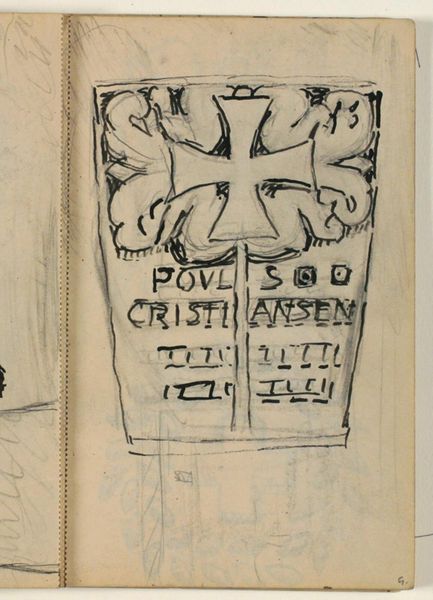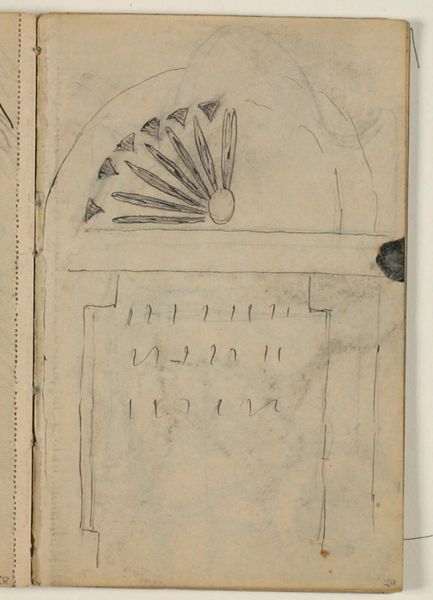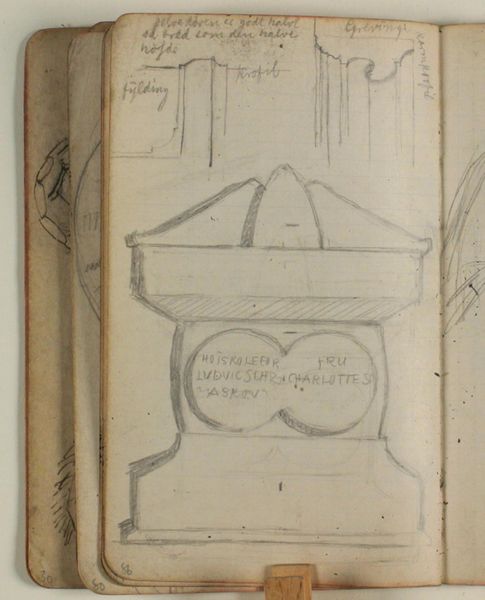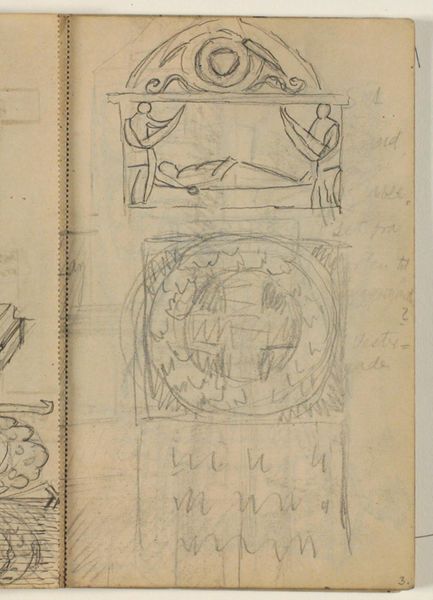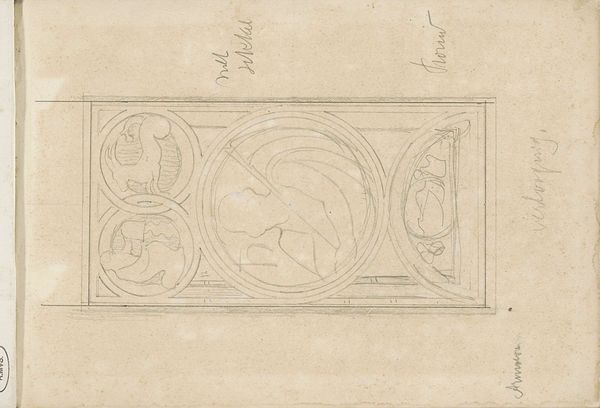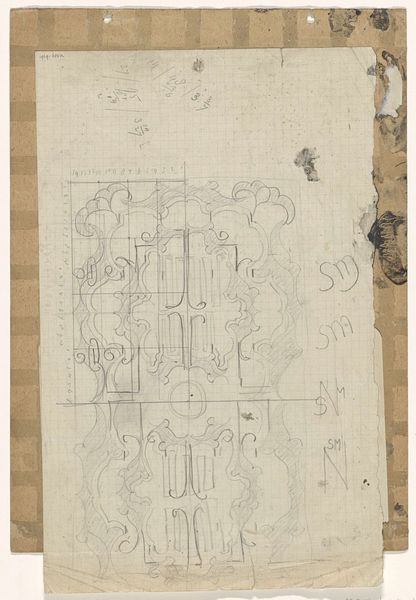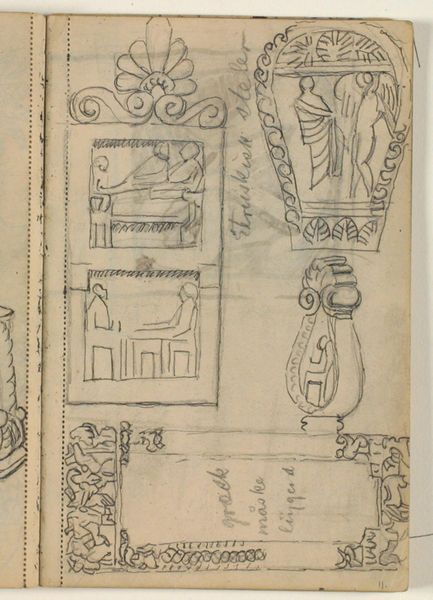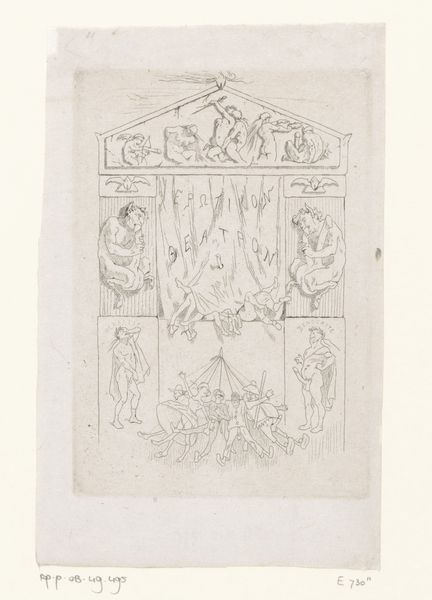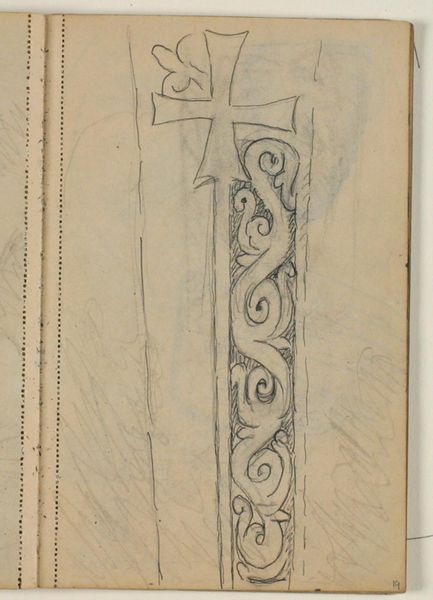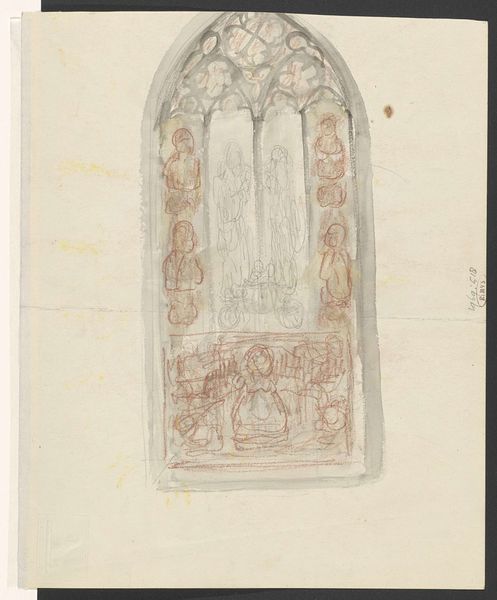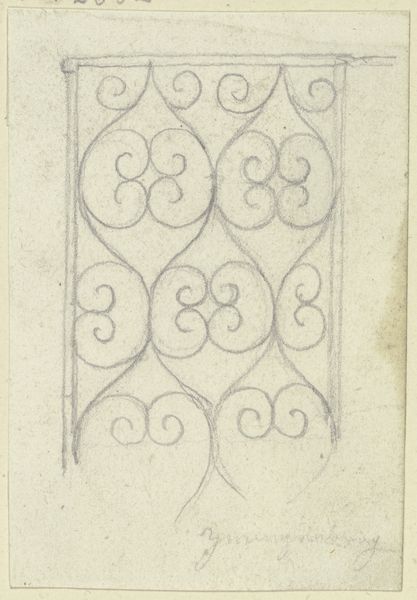
Studie af gravmæle, formentlig efter forlæg 1932 - 1935
0:00
0:00
drawing, paper, pencil
#
drawing
#
medieval
#
paper
#
geometric
#
pencil
#
line
Editor: Here we have Niels Larsen Stevns' "Studie af gravmæle, formentlig efter forlæg," created between 1932 and 1935 using pencil on paper. The sketch feels incredibly architectural, like a blueprint almost, but also incomplete. How would you interpret the composition of this study? Curator: The composition relies heavily on geometric forms and line. Notice how Stevns employs a very economical use of line to define the structure. The starkness emphasises a clear separation between planes. What does the centrality of the cross atop the structure evoke for you? Editor: It definitely brings a sense of religious monumentality to the piece. The cross acts as a focal point that grounds the study in something larger than just its structural design. I wonder about the seemingly random lines within the structure’s body, though. Curator: Indeed. Semiotically, the lines disrupt any possibility of a straightforward reading. Consider their potential function within the formal structure—their distribution is clearly not haphazard; rather, it creates a rhythmic visual texture against the otherwise rigid geometric forms. They simultaneously build up and break down the image. Does this resonance evoke an intended meaning, in your assessment? Editor: I see what you mean about the rhythm. The lines don't just fill the space; they actively create a contrasting texture. The combination of precise geometry and the loose lines gives the work an appealing tension. Thanks, I never would have spotted that on my own! Curator: And I am always interested to see how another approaches a piece! Paying attention to such formal dynamics always unveils new potentials of understanding and seeing.
Comments
No comments
Be the first to comment and join the conversation on the ultimate creative platform.
